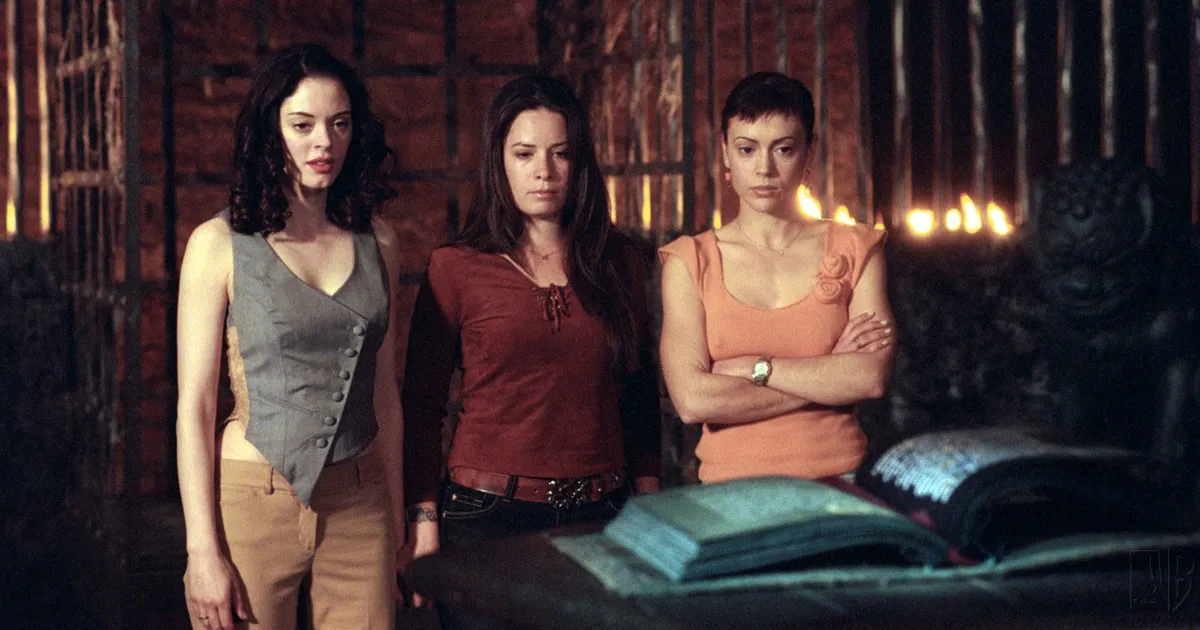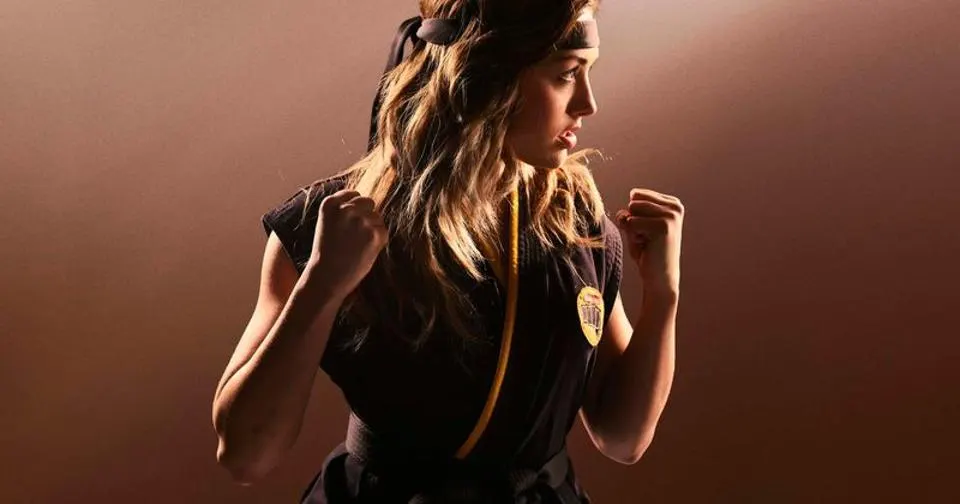The television show “Charmed,” which aired from 1998 to 2006, holds a significant place in the annals of television history. With its compelling narrative, rich mythology, and strong female characters, the show captivated audiences and left an indelible mark on pop culture. This article delves into the storylines across all eight seasons, examines the main characters, and explores the show’s contemporary portrayal of magic and witches. Furthermore, it highlights “Charmed” as a trailblazer for female representation on television.
With the recent tragic passing of Shannen Doherty who portrayed Prue Halliwell in the series, our hearts were more than ever in the right place to write this article and remind everyone why Charmed was more than a welcome entertainment on television but also a beacon of change and empowerment for a lot of girls and women out there. And thus across many countries and generations. Let’s dive right into it!

The Storyline Across the Seasons
“Charmed” begins with the discovery of the Halliwell sisters’ destiny as powerful witches, known as the Charmed Ones. The series follows their journey as they balance their magical responsibilities with their personal lives, tackling a range of supernatural threats along the way.
Season 1: The Awakening of Power
The first season introduces Prue, Piper, and Phoebe Halliwell, who reunite in their family home after the death of their grandmother. They soon discover their magical heritage and receive the Book of Shadows, a tome containing spells, potions, and a record of their ancestors. The sisters each possess unique powers: Prue can move objects with her mind, Piper can freeze time, and Phoebe has premonitions of the future. The season focuses on the sisters learning to harness their powers while battling various demons and warlocks.
Season 2: Strengthening the Bonds
In the second season, the Halliwells face more formidable foes and personal challenges. Piper’s romance with their whitelighter (guardian angel) Leo Wyatt develops, adding complexity to their lives. Prue continues to struggle with her responsibilities as the eldest sister, and Phoebe pursues her education while honing her psychic abilities. The season explores themes of love, trust, and the importance of family.

Season 3: The Ultimate Sacrifice
Season three is pivotal, marked by the intensification of the sisters’ powers and their struggles against evil. Prue’s abilities grow stronger, Piper and Leo’s relationship faces celestial obstacles, and Phoebe falls in love with Cole Turner, a half-demon. The season culminates in a tragic confrontation with the powerful demon Shax, resulting in Prue’s death—a shocking and emotional moment that changes the trajectory of the series.
Season 4: Rebirth and Renewal
The fourth season introduces Paige Matthews, a half-sister who shares the Halliwell bloodline through their mother. Paige, the daughter of Patty Halliwell and her whitelighter Sam, brings the Power of Three back to full strength. As they welcome Paige into their lives, the sisters face the Source of All Evil and other dark entities. This season emphasizes themes of rebirth, family, and the resilience of sisterhood.
Season 5: Mythology and Maturity
Season five delves deeper into magical mythology, featuring encounters with gods, nymphs, and other mystical beings. Piper and Leo’s relationship reaches new heights as they marry and prepare for the arrival of their first child. Phoebe’s tumultuous relationship with Cole, who vacillates between good and evil, adds emotional depth to the season. Paige continues to grow into her role as a witch, exploring her dual heritage.
Season 6: Trials and Triumphs
The sixth season presents the Halliwells with significant challenges, including the arrival of Chris Perry, a mysterious whitelighter from the future with a hidden agenda. The season is marked by time travel, complex family dynamics, and the constant battle against evil forces. Piper and Leo’s relationship undergoes strain, and the sisters’ bond is tested as they navigate their roles as protectors of the innocent.
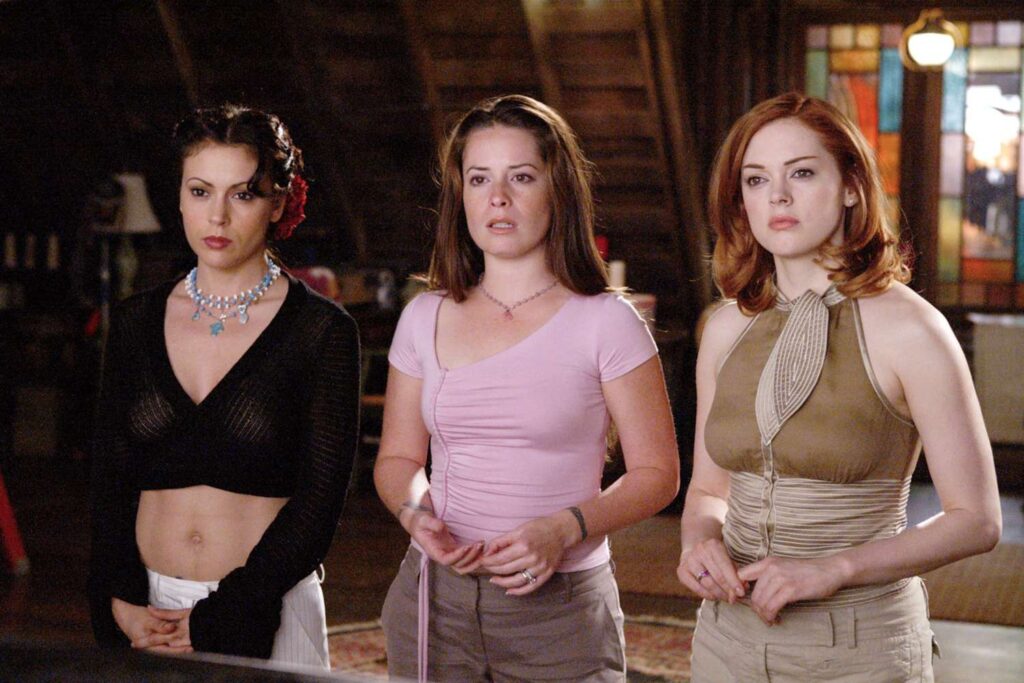
Season 7: The Battle for the Greater Good
In season seven, the sisters confront the Avatars, powerful beings who seek to create a utopian world by eradicating free will. The moral dilemmas posed by the Avatars’ vision of a perfect world lead to intense conflict and introspection. Meanwhile, the sisters continue to protect their family and the magical community. Leo’s transformation into an Avatar and his subsequent fall from grace add emotional depth to the storyline.
Season 8: Legacy and Closure
The final season brings closure to the Halliwell saga. Billie Jenkins, a young witch with extraordinary powers, joins the sisters in their fight against ultimate evil. The season explores themes of mentorship, legacy, and sacrifice. The series finale, “Forever Charmed,” provides a poignant conclusion, depicting the sisters’ futures and the lasting impact of their legacy.
Characters: The Heart of Charmed
The characters of “Charmed” are central to its enduring appeal. Each sister brings unique qualities and struggles, making them relatable and inspirational figures.
Prue Halliwell
Prue, portrayed by Shannen Doherty, is the eldest Halliwell sister and a natural leader. Her telekinetic abilities symbolize her determination and strength. Prue’s journey is marked by her struggle to balance her responsibilities and personal desires. Her tragic death leaves a lasting impact on her sisters and the show’s narrative.
Piper Halliwell
Piper, played by Holly Marie Combs, is the middle sister and the heart of the family. Her power to freeze time reflects her desire for control and stability. Piper’s evolution from a hesitant witch to a powerful matriarch is a central theme. Her love story with Leo and her role as a mother add emotional depth to her character.
Phoebe Halliwell
Alyssa Milano’s Phoebe is the youngest sister initially and the most adventurous. Her premonition powers represent her connection to the future and her empathetic nature. Phoebe’s growth from a carefree spirit to a wise and resilient witch is a significant arc. Her tumultuous relationship with Cole provides drama and complexity.
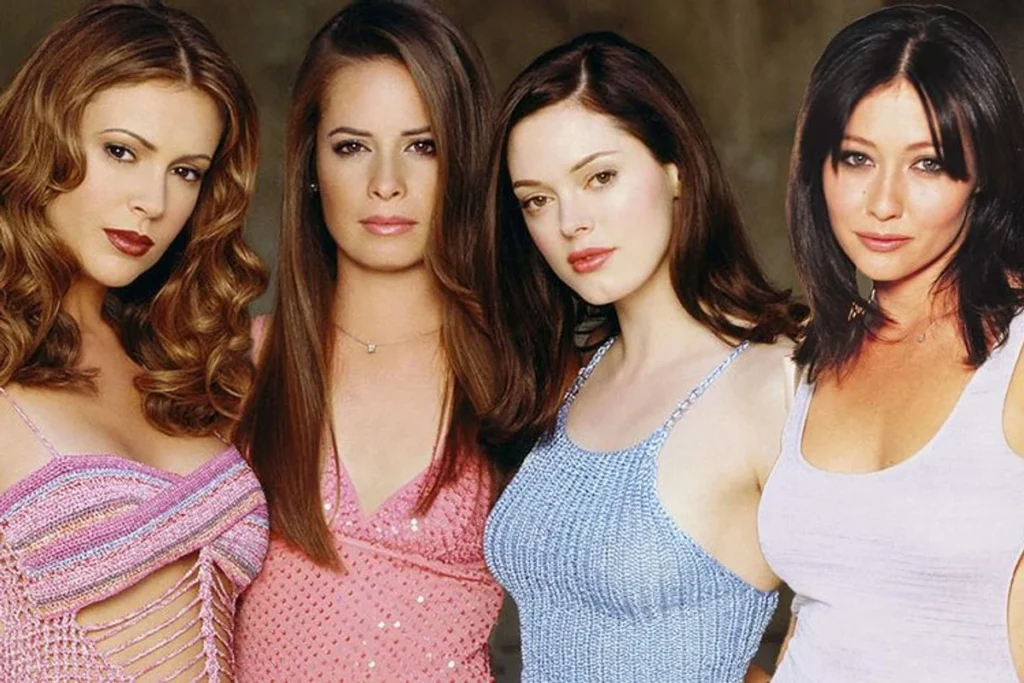
Paige Matthews
Introduced in season four, Paige (Rose McGowan) brings a fresh dynamic to the show. As a half-whitelighter, she bridges the gap between witches and celestial beings. Paige’s journey of self-discovery and acceptance of her dual heritage enriches the show’s narrative. Her artistic talents and rebellious spirit make her a unique addition to the Halliwell family.
Leo Wyatt
Brian Krause’s Leo is the sisters’ whitelighter and Piper’s love interest. His role as a guardian angel and his evolving relationship with Piper provide a balance of celestial and earthly elements. Leo’s character embodies themes of duty, sacrifice, and love.
Cole Turner
Julian McMahon’s Cole is a complex character, oscillating between good and evil due to his half-demon nature. His love for Phoebe and his internal struggle add layers of intrigue and drama. Cole’s character explores themes of redemption, identity, and the duality of human nature.
Billie Jenkins
Kaley Cuoco’s Billie joins the show in the final season as a young witch with immense potential. Her quest to find her missing sister and her mentorship under the Halliwells highlight themes of sisterhood, guidance, and the passing of the torch.

Why Charmed is an Important Contemporary Show
Breaking Stereotypes
“Charmed” played a pivotal role in breaking stereotypes about witches and magic. Traditionally, witches in media were often depicted as old hags, evil sorceresses, or misunderstood outsiders. “Charmed” subverted these tropes by presenting the Halliwell sisters as young, attractive, and relatable women who use their powers to fight evil. This modern portrayal helped to normalize the idea of witches and magic, making it more accessible and appealing to contemporary audiences.
The show also challenged gender stereotypes. In a genre dominated by male heroes, “Charmed” featured strong female protagonists who were not only capable of defending themselves but also others. The sisters were not damsels in distress; they were warriors, leaders, and protectors. This portrayal was refreshing and empowering, providing a new narrative for female characters in the supernatural genre.
Embracing Diversity
“Charmed” was ahead of its time in embracing diversity. While the main cast was predominantly white, the show introduced a range of diverse characters over its eight seasons. This included characters of different races, sexual orientations, and backgrounds. For instance, the show featured a number of strong women of color in recurring and guest roles, such as Darryl Morris (Dorian Gregory), the Halliwells’ loyal police ally, and Sheila Morris (Sandra Prosper), Darryl’s wife.
Additionally, “Charmed” explored themes of sexuality and acceptance. Although it did not prominently feature LGBTQ+ main characters, it included storylines that dealt with issues of identity and acceptance. For example, in the later seasons, the character of Billie Jenkins’ sister, Christy, becomes a focal point for exploring themes of manipulation, brainwashing, and the struggle for one’s true identity.


Tackling Social Issues
“Charmed” did not shy away from addressing social issues. Through its supernatural lens, the show tackled topics such as sexism, racism, and homophobia. For example, in the episode “She’s a Man, Baby, a Man!” (Season 2, Episode 5), Piper experiences life as a man and gains insight into the challenges faced by both genders. This episode, while humorous, also highlights the issues of sexism and the different societal expectations placed on men and women.
Another notable episode is “Witch Trial” (Season 2, Episode 1), where the sisters face a demon who forces them to relive their worst fears and insecurities. This episode delves into themes of self-doubt, guilt, and the pressure to live up to expectations—issues that resonate with many viewers.
The Role of Family and Sisterhood
At its core, “Charmed” is a show about family and sisterhood. The Halliwell sisters’ bond is the heart of the series. Their relationships with each other are complex and multifaceted, reflecting the realities of family dynamics. They argue, they support each other, they make mistakes, and they grow together. This portrayal of family is both realistic and aspirational, resonating with viewers on a deep emotional level.
The theme of sisterhood extends beyond the biological ties of the Halliwells. Throughout the series, the sisters form close bonds with other women, creating a broader sense of community and support. This network of women, both magical and non-magical, reinforces the idea that strength comes from unity and solidarity.
Female Empowerment
“Charmed” is a show about female empowerment in every sense. The Halliwell sisters are not only powerful witches but also strong, independent women. They balance their magical duties with their personal lives, careers, and relationships. This balance is a central theme of the show, highlighting the challenges and triumphs of being a woman in contemporary society.
The show also emphasizes the importance of self-discovery and personal growth. Each sister undergoes a journey of self-discovery, learning to embrace her strengths and weaknesses. This journey is often marked by challenges and setbacks, but ultimately leads to greater self-awareness and empowerment.
Influence on Popular Culture
“Charmed” has had a lasting influence on popular culture. Its impact can be seen in the many supernatural-themed shows that followed, such as “Buffy the Vampire Slayer,” “Supernatural,” and “The Vampire Diaries.” These shows owe a debt to “Charmed” for paving the way for complex, multifaceted portrayals of supernatural beings and for placing strong female characters at the forefront.
The show’s influence extends beyond television. “Charmed” has inspired a range of merchandise, including books, comics, and video games. Its themes and characters have also been referenced and parodied in other media, further cementing its place in pop culture history.

The Reboot
The enduring popularity of “Charmed” led to a reboot in 2018. The new “Charmed” series features a new set of sisters—Macy, Mel, and Maggie—who discover their magical heritage and take up the mantle of the Charmed Ones. The reboot has updated the original premise to reflect contemporary issues and sensibilities, including greater diversity and more explicit exploration of LGBTQ+ themes.
While the reboot has faced mixed reviews, it speaks to the lasting impact of the original series. The fact that “Charmed” continues to inspire new interpretations and adaptations underscores its significance and enduring appeal.
Commentary on Representation of Witches and Magic
Redefining Witchcraft
“Charmed” redefined the representation of witchcraft in popular culture. Traditionally, witches were often portrayed as malevolent or misunderstood figures, often living on the fringes of society. “Charmed” subverted these stereotypes by presenting witches as modern, relatable women who use their powers to protect the innocent and fight evil.
The show’s portrayal of witchcraft is deeply rooted in a sense of heritage and tradition. The Halliwell sisters inherit their powers and the Book of Shadows from their ancestors, emphasizing the idea of witchcraft as a family legacy. This portrayal grounds the magical elements in a rich history and tradition, making them feel authentic and meaningful.
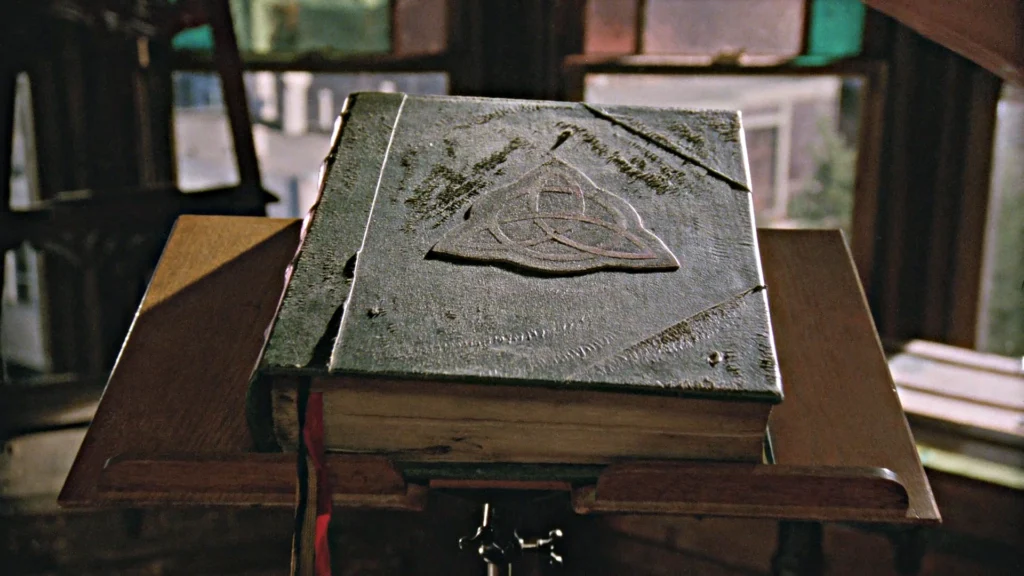
Magic as Metaphor
In “Charmed,” magic often serves as a metaphor for real-life issues and challenges. The sisters’ powers are extensions of their personalities and reflect their personal struggles. For example, Prue’s telekinesis symbolizes her need for control and her role as the responsible eldest sister. Piper’s power to freeze time reflects her desire for stability and order in her life. Phoebe’s premonitions represent her empathetic nature and her connection to the future.
The show’s use of magic as a metaphor allows it to explore complex themes in a relatable and engaging way. It also adds depth to the characters and their journeys, making their struggles and triumphs feel more resonant and impactful.
The Book of Shadows
The Book of Shadows is a central element of “Charmed” and serves as a symbol of the sisters’ heritage and power. Passed down through generations of Halliwell witches, the book contains spells, potions, and a record of their ancestors’ experiences. It is both a source of knowledge and a connection to their past.
The Book of Shadows also represents the importance of family and tradition. The sisters add their own entries to the book, creating a living document that reflects their experiences and growth. This continuity emphasizes the idea of magic as a family legacy and underscores the importance of honoring and preserving one’s heritage.
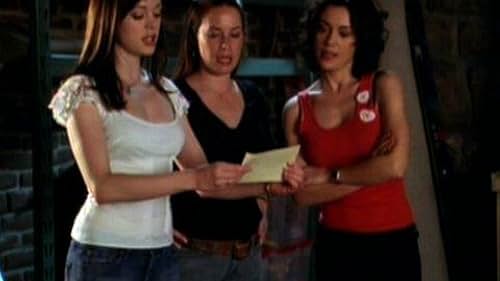
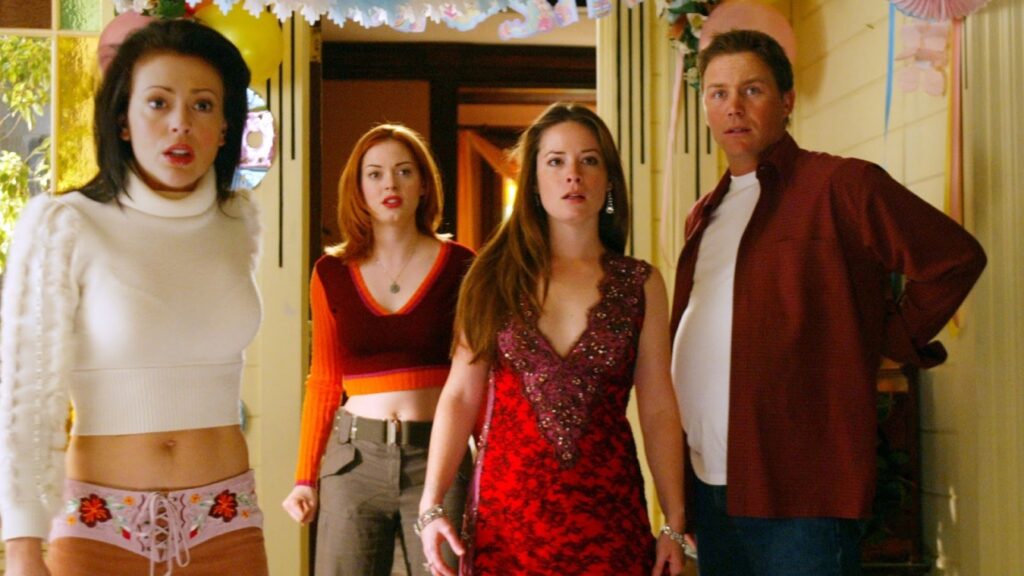
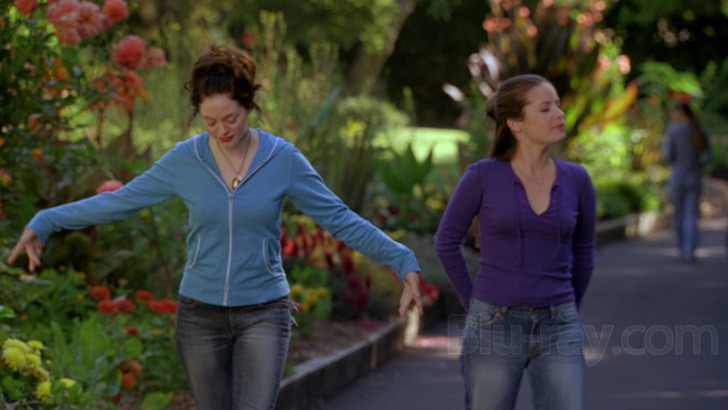
The Power of Three
The concept of the Power of Three is central to “Charmed.” The Halliwell sisters’ combined powers are greater than the sum of their individual abilities, reflecting the strength of their bond and the importance of unity. The Power of Three serves as a metaphor for the power of sisterhood and collective action.
Throughout the series, the Power of Three is a source of strength and resilience for the sisters. It allows them to overcome formidable foes and challenges, emphasizing the idea that they are stronger together. This theme of unity and solidarity is a powerful message that resonates with viewers.
Commentary on Female Representation and Empowerment
Strong Female Protagonists
“Charmed” was revolutionary in its portrayal of strong female protagonists. At a time when television often relegated women to secondary roles, “Charmed” placed strong, independent women at the forefront. The Halliwell sisters are multifaceted characters who embody strength, vulnerability, intelligence, and compassion. They are not defined by their relationships with men but by their bonds with each other and their commitment to their destiny.
The show addresses themes of empowerment, both personal and collective. The sisters’ journey is one of self-discovery, growth, and mutual support. Their ability to overcome challenges, both supernatural and personal, serves as a powerful message of resilience and empowerment for viewers.
Breaking Gender Stereotypes
“Charmed” played a pivotal role in breaking gender stereotypes. In a genre dominated by male heroes, “Charmed” featured strong female protagonists who were not only capable of defending themselves but also others. The sisters were not damsels in distress; they were warriors, leaders, and protectors. This portrayal was refreshing and empowering, providing a new narrative for female characters in the supernatural genre.
The show also challenged traditional gender roles. The Halliwell sisters were not confined to traditional feminine roles; they were career women, warriors, and leaders. This portrayal was revolutionary and helped to broaden the representation of women in popular culture.




Female Friendships and Solidarity
“Charmed” emphasized the importance of female friendships and solidarity. The Halliwell sisters’ bond is the heart of the series. Their relationships with each other are complex and multifaceted, reflecting the realities of family dynamics. They argue, they support each other, they make mistakes, and they grow together. This portrayal of family is both realistic and aspirational, resonating with viewers on a deep emotional level.
The theme of sisterhood extends beyond the biological ties of the Halliwells. Throughout the series, the sisters form close bonds with other women, creating a broader sense of community and support. This network of women, both magical and non-magical, reinforces the idea that strength comes from unity and solidarity.
Representation of Working Women
“Charmed” was also notable for its representation of working women. The Halliwell sisters balance their magical duties with their careers and personal lives. Prue is a successful photographer and later an auction house manager, Piper owns and runs a nightclub, and Phoebe pursues a career in journalism. This portrayal of women as successful professionals was groundbreaking and helped to challenge traditional gender roles.
The show also addressed the challenges faced by working women. The sisters often struggle to balance their careers with their magical duties and personal lives. This portrayal was realistic and resonant, reflecting the experiences of many working women.
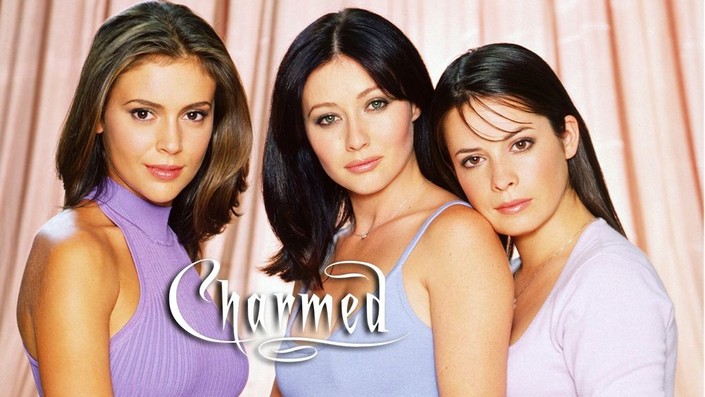
Impact on Future Television
“Charmed” has had a lasting impact on future television. Its portrayal of strong female protagonists, complex family dynamics, and contemporary representation of magic and witches paved the way for other supernatural-themed shows. Series like “Buffy the Vampire Slayer,” “Supernatural,” and “The Vampire Diaries” owe a debt to “Charmed” for setting a precedent for complex, multifaceted portrayals of supernatural beings and for placing strong female characters at the forefront.
The show’s influence extends beyond the supernatural genre. “Charmed” helped to broaden the representation of women in popular culture, inspiring future shows to feature strong, independent female protagonists. The show’s emphasis on female friendships and solidarity has also had a lasting impact, influencing the portrayal of female relationships in television.
The Reboot and Its Significance
The enduring popularity of “Charmed” led to a reboot in 2018. The new “Charmed” series features a new set of sisters—Macy, Mel, and Maggie—who discover their magical heritage and take up the mantle of the Charmed Ones. The reboot has updated the original premise to reflect contemporary issues and sensibilities, including greater diversity and more explicit exploration of LGBTQ+ themes.
While the reboot has faced mixed reviews, it speaks to the lasting impact of the original series. The fact that “Charmed” continues to inspire new interpretations and adaptations underscores its significance and enduring appeal.


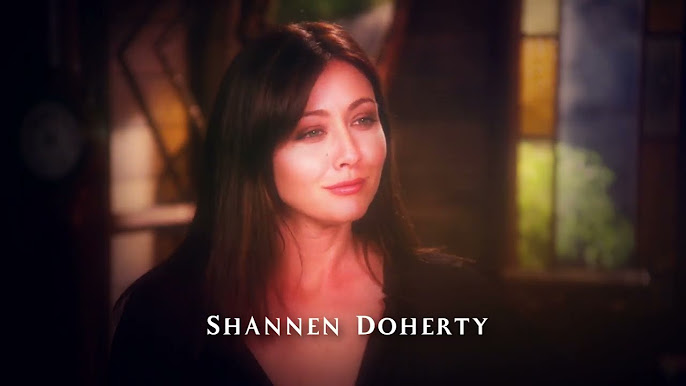
The Power of Three Will Set Us Free
“Charmed” is a major show in television history, renowned for its contemporary portrayal of magic and witches and its groundbreaking representation of women. Through its compelling storylines, rich mythology, and strong female characters, “Charmed” has left an indelible mark on pop culture. The show’s emphasis on family, sisterhood, and female empowerment continues to resonate with audiences, making it a timeless and influential series.
“Charmed” redefined the representation of witchcraft, challenging traditional stereotypes and presenting witches as modern, relatable women. The show’s use of magic as a metaphor for real-life issues added depth to the characters and their journeys, making their struggles and triumphs feel more resonant and impactful.
The portrayal of strong female protagonists in “Charmed” was revolutionary, providing a new narrative for female characters in the supernatural genre. The show’s emphasis on female friendships and solidarity reinforced the idea that strength comes from unity and mutual support. The representation of working women and the realistic portrayal of the challenges they face was also groundbreaking.
“Charmed” has had a lasting influence on popular culture, inspiring future television shows and broadening the representation of women in media. The reboot of the series speaks to its enduring appeal and significance.
In conclusion, “Charmed” is more than just a television show; it is a cultural phenomenon that has redefined the portrayal of witches and magic, challenged gender stereotypes, and championed female empowerment. Its legacy continues to inspire and resonate with audiences, making it a timeless and influential series.
